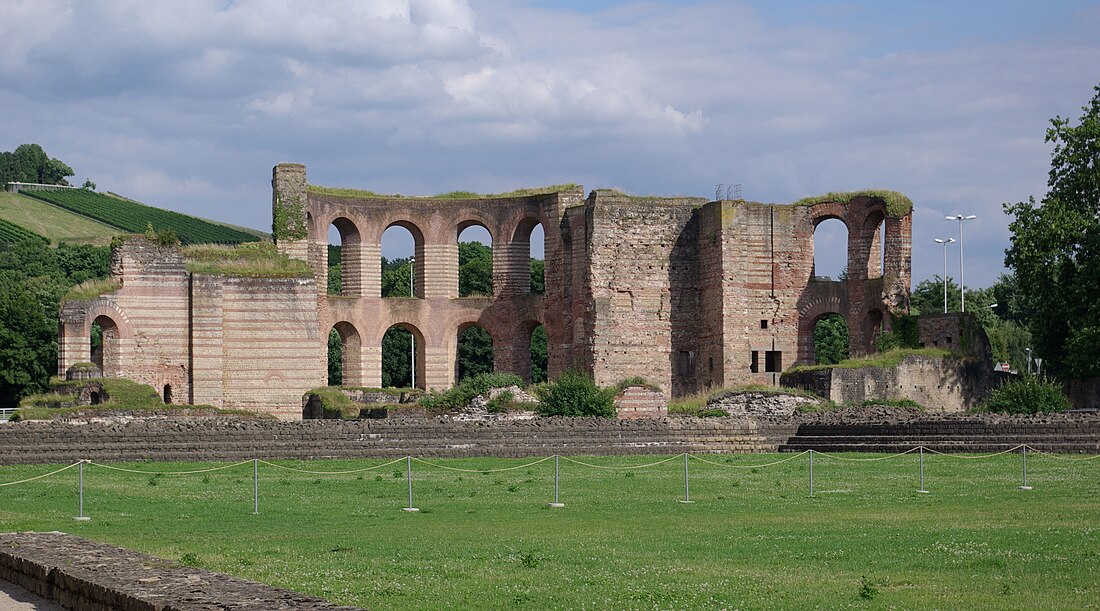Top Qs
Timeline
Chat
Perspective
Trier Imperial Baths
UNESCO World Heritage Site in Rhineland-Palatinate, Germany From Wikipedia, the free encyclopedia
Remove ads
The Trier Imperial Baths (German: Kaiserthermen) are a large Roman bath complex in Trier, Germany. The complex was constructed in the early 4th century AD, during the reign of Constantine I. During that time, Trier was a major imperial hub, being a primary residence for Constantine's son Crispus. The baths were built around hot water pools reaching 40°C.[1] Underneath the complex was a network of underground passageways used by the staff which can still be seen today, along with the remains of the sewer system.[1] However, the baths were never completed and were made into a castle in the Middle Ages.[2]
This article has multiple issues. Please help improve it or discuss these issues on the talk page. (Learn how and when to remove these messages)
|
Remove ads
History
Roman Period
Constantius Chlorus initiated construction of the baths shortly before 300 C.E. and construction ceased around 316 C.E. with the baths still incomplete. Like Imperial baths found in Rome, such as the Baths of Caracalla or the Baths of Trajan, the Trier Imperial Baths were divided into two parts, the thermae and the palaestra. The palaestra measures 160 by 130 meters, while the main bath building is west of these exercise grounds.
Later Uses
Current Remains
Remove ads
Gallery
- Augusta Treverorum City Plan
- Model of the Baths
- 1983, before some restoration
- remains of walls and subterranean passages
See also
External links
- "Tourist-Information Trier: Imperial Baths: Info". trier-info.de. Retrieved 2014-01-31.
References
Wikiwand - on
Seamless Wikipedia browsing. On steroids.
Remove ads



















